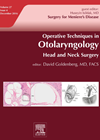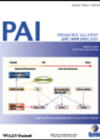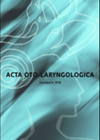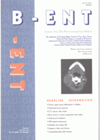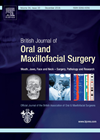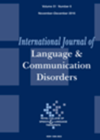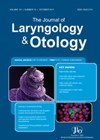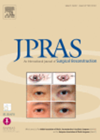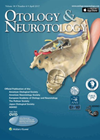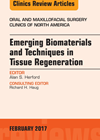
Journal Reviews archive for May 2017
Performing a labyrinthectomy
This article takes the reader through the two main approaches for a labyrinthectomy for intractable Meniere’s disease. These are the traditional trans-mastoid and the less well known trans-canal. They state that according to the House clinic, the selection criteria for...
Blocked nose in children with allergic rhinitis
Nasal obstruction is a classic symptom in children with allergic rhinitis. While the nasal obstructive disorders including septal deformity, turbinate hyperplasia and adenoidal enlargement are widely recognised in adult nasal blockage, their relationship with paediatric allergic rhinitis however, is scarcely...
Which is the best graft for myringoplasty?
This is a systematic review and meta-analysis of retrospective studies for type 1 tympanoplasty (myringoplasty) surgery comparing temporalis fascia and cartilage autograft materials for reconstruction. Inclusion criteria was patients with more than 50% perforated tympanic membrane with intact ossicular chain....
Results of hypoglossal-facial nerve anastamosis techniques for facial palsy
Preserving facial nerve function is of prime importance in acoustic neuroma surgery. A comprehensive knowledge of anatomy, experience and surgical precautions can reduce the incidence significantly. Important considerations are when and how to repair if injury occurs. Several options include:...
Paper patching for aural fullness
This Belgian prospective study reported on the effect of paper patching on aural fullness of unknown aetiology. It looked at 22 patients who complained of aural fullness without any middle ear pathology. The patients were divided into a treatment group...
Anterolateral thigh cutaneous flap or radial forearm free flap for tongue defect reconstruction?
Free flap reconstruction is the gold standard in tongue reconstruction, aiming to restore function such as swallowing, cosmesis and speech. The anterolateral thigh cutaneous flap and the radial forearm free flap are among the most popular free flaps used for...
Parental role in childhood speech disorder intervention
Several studies have indicated that parents play an effective role in the management of early communication disorders like stuttering and language delay in children, especially when they are supported by clinicians. This comprehensive review attempted to study published literature regarding...
SpeechEasy® for stuttering
In this article, the authors describe their experiences with an altered auditory feedback (AAF) device: SpeechEasy® during a random clinical trial. AAF has been reported in other laboratory studies to reduce stuttering events without influencing the rate, intensity or frequency...
Do intratympanic injections require local anaesthesia?
Intratympanic injections are becoming increasingly acceptable in the management of Meniere’s disease, tinnitus and sudden hearing loss. This is because they avoid the need for hospitalisation and can be performed as low-cost outpatient procedures. It is traditional to freeze the...
SPECT-CT imaging improves surgical efficiency in sentinel lymph node biopsy in melanoma
Sentinel lymph node biopsy is used in clinically lymph node negative, primary cutaneous melanoma. A combination of planer lymposcintigraphy using a radiolabelled colloid detected intra-op by gamma probe, and cutaneous injection of blue dye is used. However, with lymphoscintigraphy spillage...
BAHAs in single-sided deafness doesn’t improve sound localisation
This systematic review from South Korea nicely summarises what we know about SSD (single-sided deafness) and hearing rehabilitation with BAHAs (Bone Anchored Hearing Aids). SSD was defined as a PTA greater than 90 dB and a normal hearing opposite ear...
Basic principles of bioengineering and regeneration
The ability to create de novo tissue to replace that removed from patients during surgery is a relatively recent advance. However, this is a fast-moving field and one which surgeons must be aware of from practical, ethical and scientific viewpoints....

